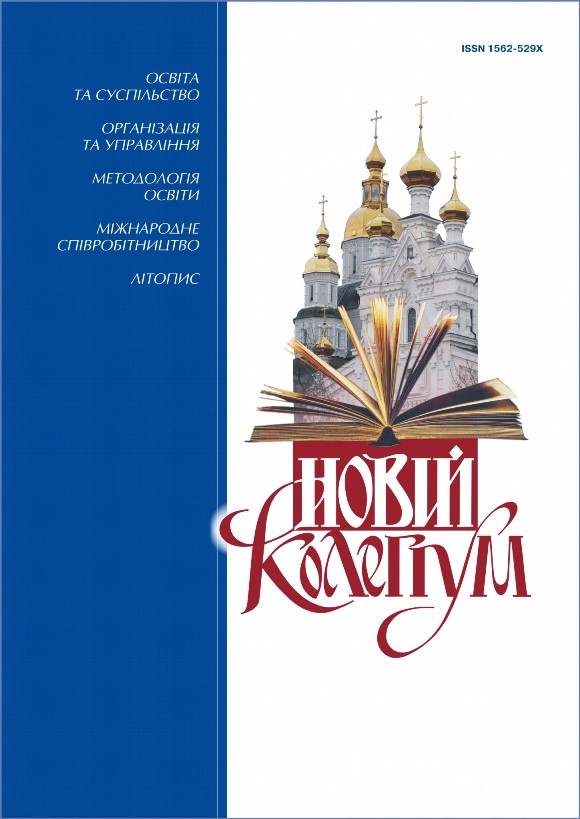Cossack pedagogy – characteristic features
DOI:
https://doi.org/10.30837/nc.2020.2.40Keywords:
education, Cossack pedagogy, physical education, tradition, humanism, patriotism, national consciousnessAbstract
The article is devoted to disclosure of the characteristic features of Cossack pedagogy. Attention is focused on the fact that education in the context of the chosen topic is understood as a specially organized by interactions among educators and pupils to understand the spiritual and material culture of the nation, the formation of national consciousness and the achievement of spiritual unity of generations.
The identity of Ukrainian national psychology in the article is determined by the basis of Cossack pedagogy. Among the factors, a large number of male children were identified, who constantly replenished the ranks of Sich’s pupils, abandoned, or abducted in campaigns against рeople of other faiths, as well as the high cultural level of the Cossack state. The authors noted that education dynamically developed through the formation of Cossack schools of various types. The goal of these schools was to educate and form a diversified personality through the development of martial arts, combat training through dance, teaching singing, reading and writing, the God's law. Graduates of Sich schools could continue their studies at the Kiev-Mohyla Academy.
It is stated that Cossack pedagogy synthesized humanism and deep democratism of the Ukrainian worldview, relied on national traditions, rich experience of self-government and the level of formation of justice in conventual and fraternal schools.
The article focuses on the global significance of Cossack pedagogy. As the most famous example of Cossack martial arts, the authors highlighted the Cossack Hopak dance.
It is indicated, that individual Cossacks by special exercises achieved an incredible effect when the body seemed to play (in this case, the enemy’s painful hits were not felt). Cossacks were able to instantly concentrate internal energy in that part of their body where the enemy’s blow was directed. Such phenomena are inherent in martial arts, for example, the art of Tibetan monks of the cathode and the "school of the iron shirt" in kung fu and karate.
References
Козацька педагогіка допомагатиме сучасному вихованню молоді [Електронний ресурс] : Режим відкритого доступу : https://www.zoda.gov.ua/news/48296/kozatska-pedagogika-dopomagatime-suchasnomu-vihovannju-molodi.html
Яворницький Д. І. Історія запорозьких козаків : у 3-х т. Т. 1 / Передмова В. А. Смолія ; ред. кол.: П. С. Сохань, В. А. Смолій, В. Г. Сарбей, Г. Я. Сергієнко, М. М. Шубравська (відп. секр.). АН Української РСР. Археографічна комісія, Інститут історії. Київ : Наук. думка, 1990. 596 с. (Пам’ятки історичної думки України)
Маланюк Є. Ф. Нариси з історії нашої культури. Київ : Обереги, 1993. 79, [2] c.
Полонська-Василенко Н. Д. Історія України. Київ : Либідь, 1995. Т. 2 : Від середини XVII століття до 1923 року. 3-тє вид.: [б.в.]. 1995. 606, [2] с.
Сірополко С. Історія освіти в Україні. Київ : Оберіг, 1998. 782 с.
Чорнокрилюк О. Якби не козаки, не існувала б наша нація / О. Чорнокрилюк // Педагогічний вісник. 2016. № 1 (42). С. 36.

